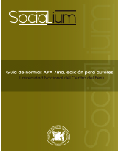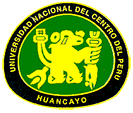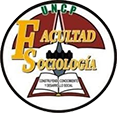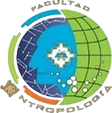Resilience in male and female high school students of the Manuela Saenz school in Quito - Ecuador, in times of COVID-19
DOI:
https://doi.org/10.26490/uncp.sl.2022.6.1.1371Keywords:
resilience, students, bachelorAbstract
The purpose of the research work was to determine the difference in the level of resilience between male and female high school students at the Manuela Saenz College in the city of Quito-Ecuador in times of COVID-19. The study was of a quantitative approach, descriptive level and non-experimental design, cross-sectional and descriptive comparative; The sample consisted of 112 women and 103 men from high school. The data collection instrument was the Brief Resilience Scale. According to results, in women the medium level of resilience prevailed 53.57% followed by the high level 35.37% and the low level 10.72%, while in men the low level prevailed 46.61% followed by the medium level 38, 83% and high level 14.56%; a significant difference was determined between both groups (p = 0.000). In conclusion, it was shown that female students had a higher level than male students due to a better ability to face adversity.
References
Aguirre (2004). Capacidad y factores asociados a la resiliencia, en adolescentes del C.E. Mariscal Andrés Avelino Cáceres del Sector IV de Pamplona Alta San Juan de Miraflores 2002 [Tesis de pregrado, Universidad Nacional Mayor de San Marcos]. Repositorio institucional UNMSM. https://sisbib.unmsm.edu.pe/bibvirtual/tesis/salud/aguirre_ga/contenido.htm
Alvarado, L. (2018). Resiliencia en Adolescentes del 2do Grado de Secundaria de una Institución Educativa Pública en el distrito de San Juan de Lurigancho, 2017 [Trabajo de sufciencia profesional, Universidad Inca Garcilazo de la Vega]. Repositorio institucional UIGV. http://repositorio.uigv.edu.pe/handle/20.500.11818/3081
Avía, M. y Vázquez, C. (1999). Optimismo inteligente. Alianza Editorial.
Bowlby, J. (1992). El Apego y la Pérdida. Paidós Ibérica.
Cyrulnik. B. (2001). La maravilla del dolor. Granica.
Cyrulnik. B. (2006). El amor nos cura. Gedisa.
González-Arratia, N. (2018). Resiliencia. Diferencias por Edad en Hombres y Mujeres Mexicanos. Acta De Investigación Psicológica, 5(2), 1996-2010. https://doi.org/10.1016/S2007-4719(15)30019-3
Infante, F. (2002). La resiliencia como proceso: una revisión de la literatura reciente. En A. Melillo y E. Suárez (Eds.). Resiliencia descubriendo las propias fortalezas. (pp. 31-51). Paidós.
Linares, R. (2017). Resiliencia o la adversidad como oportunidad. Editorial Escuela de la Plata.
Rodríguez, A. (2009). Resiliencia. Revista de psicopedagogía, 26(80), 291-302. http://pepsic.bvsalud.org/scielo.php?script=sci_arttext&pid=S0103-84862009000200014&lng=pt&nrm=iso
Rutter, M. (1981). Resilient Children. Psychology Today, (18), 57-65.
Rutter M. (1987). Psychosocial resilience and protective mechanisms. American Journal Orthopsychiatry, (57), 316-331. https://journals.lww.com/psychosomaticmedicine/Abstract/2012/02000/Protective_Factors_for_Adults_From_Low_Childhood.10.aspx
Rutter, M. (1993). Resilience; some conceptual considerations. Journal of Adolescent Health, 14(8), 626-631. https://doi.org/10.1016/1054-139X(93)90196-V
Salgado, A. (2005). Métodos e instrumentos para medir la resiliencia: una alternativa peruana. Liberabit, 11(11), 41-48. http://pepsic.bvsalud.org/scielo.php?script=sci_arttext&pid=S1729-48272005000100006&lng=pt&nrm=iso
Smith, B., Dalen, J., Wiggins, K., Tooley, E., Christopher, P. y Bernard, J. (2008). La Escala Breve de Resiliencia: Evaluación de la capacidad para recuperarse. Revista Internacional de Medicina del Comportamiento, 15 (3), 194–200. https://doi.org/10.1080/10705500802222972
Uriarte, J.(2005). La resiliencia. Una nueva perspectiva en psicopatologíadel desarrollo. Revista de Psicodidáctica, 10(2), 61-80. https://ojs.ehu.eus/index.php/psicodidactica/article/view/190/186
Wolin, S. J. y Wolin, S. (1993). The Resilient Self: Hozv Survivors of Troubled Families Rise above Adversity. Villard Books.
Downloads
Published
Issue
Section
License
Copyright (c) 2022 José Antonio Bucheli

This work is licensed under a Creative Commons Attribution 4.0 International License.








.jpg)















